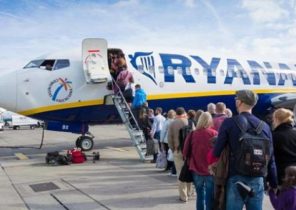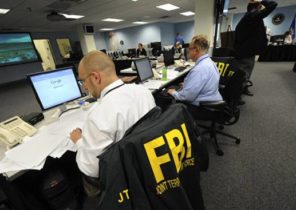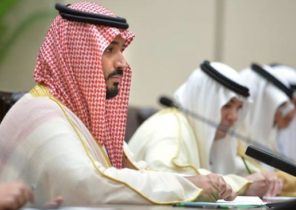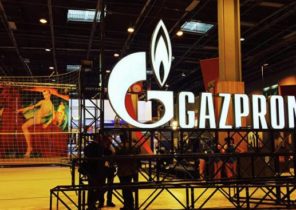
Ukraine has resumed frozen Yanukovych’s strategic goal in the sphere of security — the NATO membership. Kiev is planning to 2020 submit the application for a Plan of action on acquisition of membership in the Alliance. Experts, based on experience join NATO neighbors in the socialist camp, they say that everything can be done much faster.
Ukraine has updated the priorities in the security sphere — the Verkhovna Rada adopted the law on the strategic goal to join the Alliance. And the steps to achieve it have already been made. The Commission Ukraine-NATO marked the deadline for getting our country’s Plan of action on acquisition of membership in the Alliance (map) 2020. Why application will be submitted now, but only after three years, said the President Petro Poroshenko, saying that while “Ukraine does not meet the membership criteria as 20 years nothing was done”.
Indeed, in all the years of independence of Ukraine, not just declare its readiness to join the Alliance, then a loud assurances did not go. Special “divisive contribution to” made in this story Viktor Yanukovych. Chronicle of events is as follows: in 1992 Ukraine, after independence, joined the Euro-Atlantic partnership Council, which leads on behalf of NATO, the negotiations with non-aligned countries. In 1997 he signed a document on deepening the partnership “Charter on a distinctive partnership between NATO and Ukraine”.
In 2000, for the first time in history, NATO held its annual meeting outside the member state in Kyiv. In 2004, the Ukrainian Parliament adopted the law on free access to NATO military forces on the territory of Ukraine. Then came the first decisive step in 2005 at the meeting of the Commission Ukraine-the NATO in Vilnius, Kiev is talking about joining the Alliance. The answer came in the same year — while US President George Bush supported our choice.
And Ukraine, the guarantor of the action which was then President Viktor Yushchenko, changed military doctrine, putting the strategic goal — full membership in the Alliance. But the sound of 2006, and then Prime Minister Viktor Yanukovych, to the applause of the Kremlin, said — Ukraine is delaying the adoption of the map. As a result, in 2008 at the NATO summit in Bucharest, our country was denied a NATO membership action plan, but we are once again assured — “doors are open”, you only need to adjust to matching criteria…
Then, in 2010, Yanukovych became President, and even froze the issue of accession of our country to NATO switching to the strengthening of friendship with Russia. Resumed dialogue with the Alliance in 2014 — after the victory of the revolution of dignity and the rupture of relations with Moscow annexed the Crimea and occupied part of Donbass in response to the Association of Ukraine with Europe. Now the talks with NATO entered the active phase. But only the timing of entering into an Alliance again stretched on for years.
Experts claim that the government is incorrect benchmarks everything can be done much easier and faster. In the example of my experience of neighbors in the socialist camp, who were the first among the countries of Eastern Europe from the collapse of the Warsaw Pact and the Soviet Union became a member of NATO and has made huge progress in the field of security. We will focus on the Baltic States and Poland — and, in General, about what constitutes the path to NATO.
Plan membership the First step in NATO — receiving plan of action on membership in the Alliance (map). The map provides for the implementation of a number of conditions, and for each country they are established based on its features. But there is a General rule that is the most important, the Plan should be fully implemented.
It plan includes several blocks: economic — the economy candidates for membership must comply with European market standards; political — this unit demands in the case of our neighbors were part of lustration and decommunization, the eradication of corruption, rule of law, etc.; the military.
“Economic and political blocks directed to the applicant countries joined the European family. That is, we are talking about the unity of the objects of protection. NATO — a defensive Alliance, so the object should be uniform. And this is for all countries-participants of Alliance one,” said the military expert Nikolay Sungurovskiy, adding that a common feature of NATO membership for Eastern European countries was that they saw this as the first step to obtaining membership in the EU.
“Due to the fact that they carried out political and economic blocs, the acquisition plan for NATO membership, they were drawing closer to EU standards. That is, the way they were in parallel. Naturally, the main object of protection of NATO — Europe,” Sungurovsky said.
Further, in the map there is a military unit. First of all, we are talking about the ability of the armed forces of applicant countries for membership to interact with NATO forces. Also, the country needs to implement for its part, the contribution to the defensive capabilities of the Alliance and have common approaches to the construction of the armed forces. But in this question in relation to the candidates, too, have features. The experience of their neighbors, the Baltic Countries have similar history occurrence in the Alliance, and date of gaining membership in 2004.
Latvia was defined with a priority of joining NATO in 1991 — joined the North Atlantic cooperation Council. In 1994 signed the framework document of the program “Partnership for peace”. In 1999 at the NATO summit in Washington, Latvia was named as a candidate country for membership in the Alliance. In 2001, the structure of the Armed Forces of Latvia has been significantly revised to comply with new NATO standards.
As a border area within the Soviet Union, Latvia had a specific part of the Armed Forces, which was, in fact, the border stronghold. But according to NATO standards in the army had to change, he had to be an army of quick response to potential threats. To do this, including upgrading of technical equipment and infrastructure of the Armed Forces, Latvia was able, with the assistance of member countries of the Alliance and the United States.
Riga was provided not only the necessary equipment, but also financial support, approximately 3-4 million dollars a year. In 2003, the Latvian Parliament approved a new concept of national defence, directed on formation of professional armed forces. With the entry into NATO, Latvia has acquired anti-aircraft missiles, and then moved to the standards of the Alliance of small arms.
After using the US, the army of Latvia moved to the appropriate NATO standards auto and armored vehicles, was transferred to new means of communication. Latvia became the first of the Baltic States, which refused to call and completely moved its army to the contract (2007). Today the Armed forces of Latvia — about 6 thousand soldiers and 10 thousand reservists, the military budget — about 400 million euros per year (1.3% of GDP).
The Ministry of defence, according to NATO standards, passed under civilian control. Lithuania experienced almost the same process of joining NATO, and Latvia. In 1991 he joined the North Atlantic cooperation Council, and in January 1992 was created the official representation of Lithuania in Brussels for relations with the European community and NATO. Lithuania formally applied for membership in 1994 and was accepted into the Alliance in 2004.
As told UNIAN ex-commander of the Lithuanian army, former adviser to the Minister of defence of Lithuania General Jonas Kronkaitis requirements in Lithuania was very simple — the country assimilated the values of a democratic country and made a proportional contribution to the common defense. Lithuania had to transform its military structure, to be able to communicate with existing NATO forces.
“Lithuania is fortunate that people readily understood the value of joining the Alliance. Russia at that time was not prepared, and, in my opinion, did not think that NATO will see the sense in adopting the three Baltic States, therefore it was not conducting an effective campaign to block the process. The most difficult part — the revival of the Lithuanian economy, which then could support the necessary actions to implement the Plan for accession”, — said the General.
According to him, the defence was totally inadequate, the country had to do very much. Initially the military unit was organized by volunteers. It was not possible to acquire modern weapons or equipment. The transformation process in the regular forces took a lot of time, but along with the development of economy, the army received adequate support. Since 1997, began its transformation in accordance with NATO standards.
The priority was given to training. With the assistance of USA, UK, Denmark, Germany, France and other NATO countries, the whole system of military training of the army of Lithuania was converted. “Different countries have provided weapons and equipment as gifts or sold at a nominal price. We decided to accept such support.
The priority was given to acquisition of modern anti-tank missiles “javelin” anti-aircraft short-range missiles “stinger”. In fact, the priority was the training program for the people to create well-trained, properly organized and highly motivated Armed Forces. Lithuania has postponed the purchase of a very expensive high-tech weapons. It was done in the recent years with the assistance of the countries-members of the Alliance and the United States,” recalls Kronkaitis.
However, he stressed that Lithuania was given a lot of help, to meet the requirements of NATO, but was not done any favors that would allow these requirements to be circumvented. According to him, the basic funds were used to increase the defence power of Lithuania to deter the aggressor to approach the main forces of the allies.
“In fact, if Lithuania became a member of the Alliance, no amount would ensure her safety from foreign aggression. If we are talking about a mythical 2% of gross domestic product, I must say that such a requirement was not. In 1999, I proposed that NATO adopted minimum standard that every country should devote to its Armed Forces. This standard was never accepted formally, but informally it is used to measure whether a country’s military position to contribute to the collective defense under the NATO Charter,” said the General.
Today Lithuania is an active member of NATO, the country’s military budget is up to $ 400 million per year, the number of armed forces — just over 10 thousand regular soldiers, 6 thousand reservists. In 2008 was canceled by a call to military service, in 2015 he was temporarily resumed. Estonia is one of the founding members of the Council of the Euro — Atlantic partnership. In 1994 he joined the program “Partnership for peace”.
In 1996 started active negotiations on membership in the Alliance. In 1999 in Washington, NATO has recognized Estonia as a possible candidate members of the Alliance. In 2004, Estonia joined NATO. And began the modernization of the Armed forces with the assistance of the USA and countries-members of the Alliance on the principle of Lithuania and Latvia.
Today, Estonia is the only country among the Baltic States, where to this day has the call to military service. The armed forces of Estonia has more than 5 thousand people, of which 2 thousand military men of urgent service. Reserve team — about 16 thousand people. The country also has volunteer territorial militias which, together with the Armed Forces, are part of the Defence forces of Estonia.
These squads are able to attract to the army of about 10 thousand people if necessary. Estonia is the only Baltic country that complies with the NATO standard as a percentage of GDP for the army — 2% (400 million dollars). Since Estonia’s accession to NATO soldiers are actively involved peacekeeping missions and are part of the teachings of the Alliance.
Poland is much different process of joining NATO from the Baltic countries. And this is understandable — the area of the country, as the number of living of its inhabitants, at times more. Warsaw has declared NATO a priority immediately after the collapse of the Soviet bloc in 1989. In General, the first contacts between Poland and NATO was held at the time of action of the Warsaw Pact when Polish Armed Forces, officially called the Polish people’s army.
By the way, in those days, the Polish army was the second largest among the Armed forces of the countries of the Warsaw Pact and had more than 300 thousand troops (more troops were only in the USSR). In 1992, NATO announced the consideration of the question of the country’s accession to its ranks. In 1993 from Poland withdrawal of Soviet troops, and President Lech Walesa officially declares the priority of the foreign policy — membership in NATO. Launched the program “Partnership for peace” and the modernization of the Polish army, which was based on armored forces (2.5 thousand tanks) — old rubbish of Soviet production. In 1999, the country joined the Alliance, the Polish army had already amounted to 200 thousand people. Began purchasing equipment and upgrading the infrastructure according to NATO standards. That is, adjustment of the Polish army to the standards of the Alliance was effected after the entry of Poland into this defense Alliance.
A special place may be given to the inclusion of Poland in the investment Program NATO security (NSIP), which is created for the joint management of projects of development of the military capabilities of the member States of the Alliance. The total investment cost NSIP in Poland — 850 million euros. So Warsaw was a success, for example, to upgrade six military airports, build new communication systems to acquire radar systems and long-range detection, to acquire new aircraft and armored vehicles.
Today the Polish Armed forces consist of 120 thousand professional soldiers. Is largest — the seventh army in NATO. The country’s defense are the standard for NATO 2% of GDP (more than $ 900 million per year). Ukraine and NATO Along with the intensification of Kiev in the issue of rapprochement with the Alliance, sounded louder, and the voices of skeptics who claim that Ukraine’s accession to NATO and even to get us a map — it is impossible, at least until the end of the war in the Donbass, and Russia will stop the occupation of the Crimea. Pessimists (in the matter of Euro-Atlantic integration of Ukraine) appeal to articles 7 and 8 of the NATO Charter according to which the Alliance can not be accepted in countries that have territorial disputes and claims.
However, from a legal point of view, 7 and 8 of the articles of the Charter just a problem for Ukraine are not — at least, not be a formal obstacle for Kyiv to receive the membership action plan: Ukraine is a provocateur of the conflict, our country has territorial claims against other countries of the world no; Crimea in international law, as the Donbass, is recognized as part of Ukraine. Therefore, to obtain the minimum of the map — all the reasons Ukraine has.
And, in fact, even obtaining full membership nor passing to the East of the ATO, nor, in fact, the occupation of the Crimea by Russia is not an obstacle, whether on the political will of Kiev and key NATO capitals. A living example — membership in the Alliance at the same time Turkey and Greece, despite the participation of both countries in the Cyprus conflict. An example of joining NATO of Baltic countries and Poland, in fact, identical to the process of infusion into the Alliance of other countries in Eastern Europe. This path is parallel with the integration into the European Union.
Moreover, the countries had to switch to NATO standards (for example, the caliber small arms) before gaining membership. It was done then, with the assistance of Western partners. The authorities of Ukraine say the opposite: first the standards, then membership. But this approach can only stall the achievement of a Euro-Atlantic goals. “NATO does not require that all Armed Forces have switched to their standards. NATO needs to in a certain period of certain units took part in the General exercises. And these units must fully comply with NATO standards — communication, management, organization, combat operations, logistics. That is, Ukraine does not need to overexert yourself, the process can stretch for quite a long period and at the time of completion of the Plan of action for the membership to reach NATO standards. To invest a lot of money, as quickly as possible to obtain the map, there is no need. It is not rational. But our political leadership thinks differently,” — emphasizes the military expert, Director of military programs Razumkov Center Nicholas Sungurovsky.
Kronkaitis believes that the strategic location of Ukraine, large population and developed industry can make a significant contribution to collective defence and stability of NATO in Europe, so the prospects of Ukraine in the issue of NATO membership, according to the General, is excellent, but there is a risk of intervention in the Russia. “We have to admit, Russia said that if Ukraine becomes a NATO member, it carries for it the threat.
But NATO is not a threat, this defensive Union contributing to peace and stability, which will also benefit Russia. Unfortunately, the current Russian government plans to transform the countries of the former Soviet Union in the Russian Empire and will do everything possible to prevent Ukraine’s accession to NATO”, — says the General.
Ukraine has already achieved a lot in confronting the Russian threat at the international level. The West is on our side, support for aspirations to join NATO will be provided. It is hoped that the government will do everything possible to expedite the process of entering the Alliance — the most successful Alliance in the defence of peace, democracy and human rights, in cooperation with which the Kremlin’s aggression will be stopped.







